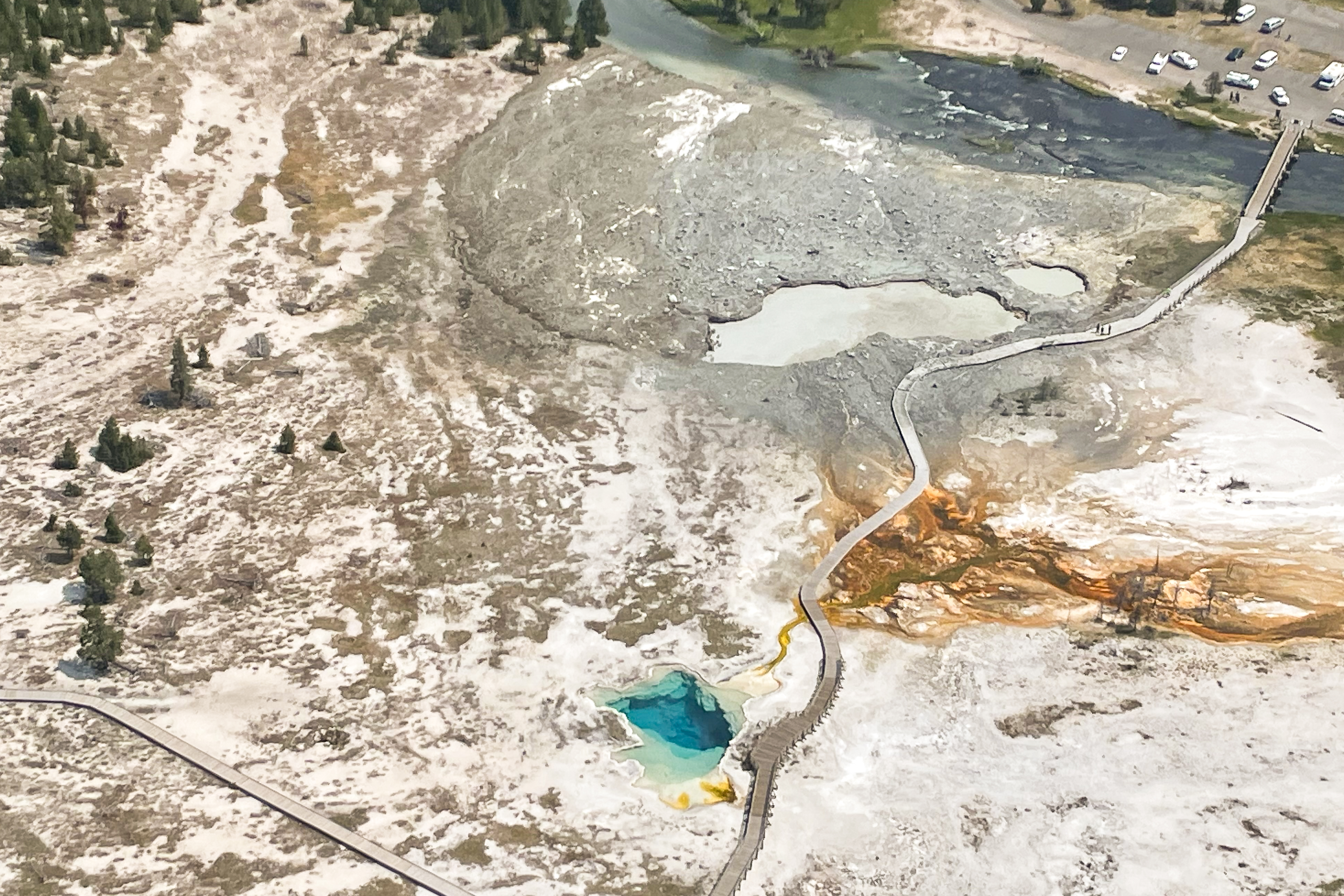The National Park Service (NPS) has released more details following the surprise hydrothermal explosion in Yellowstone’s Biscuit Basin earlier this week, providing further insight into how events unfolded and their aftermath.
“[A]t about 10:19 a.m., a localized hydrothermal explosion occurred near Sapphire Pool in Biscuit Basin, located just north of Old Faithful,” said the NPS in a statement released on July 23, the day of the explosion.
In a follow-up statement, it was revealed that water in the shallow hydrothermal system under Black Diamond Pool rapidly turned into steam, which erupted hundreds of feet into the air, sending mud, debris, and boiling water alongside it. Under normal circumstances, the pool’s water is a comparatively lukewarm 64.7°C (148.5°F).
While a previous eruption in this particular pool back in 2006 was the result of an earthquake, no non-background seismic activity was detected before Tuesday’s eruption, nor were any other detectable factors that might also indicate volcanic activity. In other words, this wasn’t a sign that “the big one” is coming any time soon.
That’s not to say there was nothing big about the explosion, which threw debris ranging from grapefruit-sized through to 1-meter wide “tens to hundreds of feet from the source,” according to the NPS, some of which “weigh hundreds of pounds.”
Luckily, the most significant damage caused by the hefty blocks of debris was to a nearby boardwalk, which has been left pretty much destroyed. As can be seen in the video above, there were visitors in the area when things popped off, but no injuries were reported – although we wouldn’t be surprised if some pants were, quite understandably, peed.
No further explosions have taken place at either Black Diamond Pool or the nearby Black Opal Pool (which was also affected by the event) since Tuesday – although there were some more tall bursts of water from the former on that day. Water levels in both continued to rise through to Wednesday, eventually overflowing and spilling their murky, debris-filled water to the close Firehole River.

This is what Biscuit Basin looked like in the aftermath of the explosion.
Image credit: NPS/Joe Bueter
Although hydrothermal explosions at Yellowstone are usually rare, officials will be keeping a close eye on the area, with “small explosions of boiling water from this area in Biscuit Basin [continuing] to be possible over the coming days to months” and the ground around the edges of the pools remaining unstable.
“[United States Geological Survey] and NPS geologists will be monitoring conditions, mapping the debris field, and sampling water to assess any changes in the shallow hydrothermal system over the next several days,” said the NPS.
Under the circumstances, the park has also announced that Biscuit Basin will remain closed to the public for the remainder of the summer season.
When the area is opened once again, visitors will be returning to a slightly altered landscape – a testament to the power of hydrothermal activity. “Black Diamond Pool and Black Opal Pool were affected by Tuesday’s explosion,” said the NPS, “and while they remain distinct features, the shape of Black Diamond has changed somewhat.”
Source Link: Yellowstone Geyser Explosion Threw Out Rocks Weighing More Than A Person